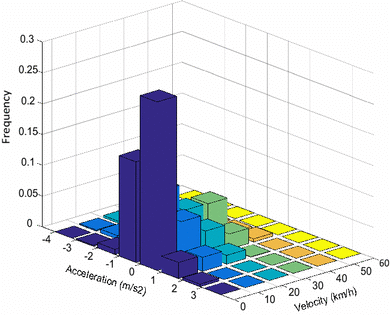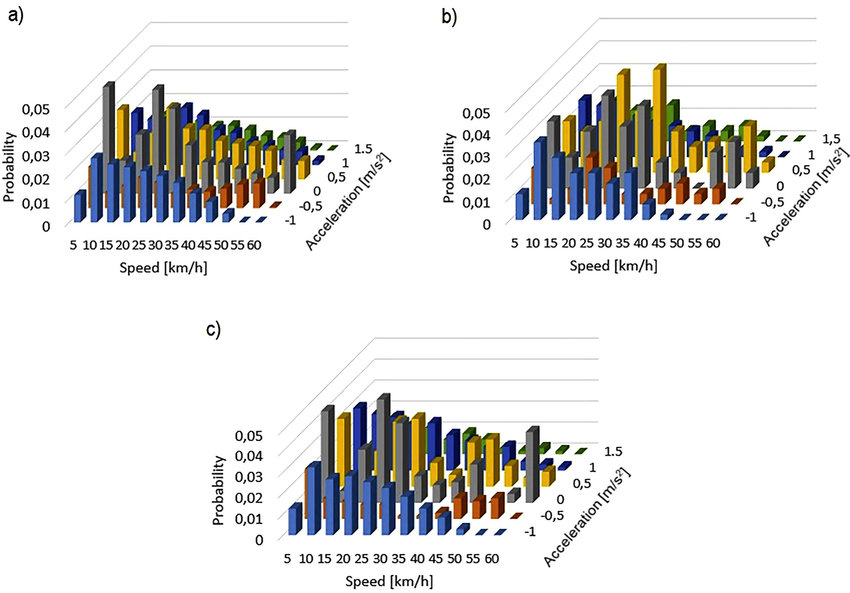
Electric vehicle development includes many technical analysis and studies. We discussed the resistances a vehicle has to overcome to move, and the energy calculations involved in electric vehicle development process.
The basic study is not enough to make a safe and good vehicle with better performance. The safety, dynamic characteristics, etc. of the vehicle also has to be considered.
The selection of motor, battery, and other power electronics components depend on these studies as well.
Two important parameters to know while analyzing the speed and acceleration of a vehicle are the SAFD (Speed Acceleration Frequency Distribution) and SAPD (Speed Acceleration Probability Distribution). We are going to check each of them in detail in this post.
SAFD (Speed Acceleration Probability Distribution)
Speed Acceleration Frequency Distribution (SAFD) is a statistical concept used to analyze and describe the distribution of acceleration values within a given speed range. It involves measuring the frequency or occurrence of different acceleration levels at various speeds.
SAFD is particularly relevant in the field of vehicle dynamics and automotive engineering, where understanding the acceleration behavior of vehicles is important for performance analysis, vehicle control, and safety considerations.

By examining the SAFD, engineers can gain insights into how vehicles accelerate at different speeds. This information can be used to optimize engine and transmission performance, design efficient drivetrains, develop control algorithms, and enhance overall vehicle performance and handling.
How to find SAFD?
SAFD analysis often involves collecting data from vehicle sensors, such as accelerometers, and processing it to determine the frequency distribution of acceleration values corresponding to different speed intervals. Statistical techniques, such as histograms or probability density functions, may be employed to visualize and analyze the SAFD data.
SAPD (Speed Acceleration Probability Distribution)
The Speed Acceleration Probability Distribution (SAPD) is a statistical concept used to analyze and describe the probability distribution of acceleration values at various speeds. It provides insights into the likelihood or probability of different acceleration levels occurring within a given speed range.
SAPD analysis is useful in the field of vehicle dynamics, as it helps understand the acceleration behavior of vehicles and provides information for performance analysis, vehicle control, and safety considerations.

By examining the SAPD, engineers can gain valuable insights into the probability of different acceleration levels occurring at specific speeds. This information can be used to optimize engine and transmission performance, design control systems, assess vehicle stability, and improve overall vehicle dynamics.
How to find SAPD?
To calculate SAPD, data is collected from vehicle sensors such as accelerometers, which measure acceleration at different speeds. The collected data is then processed to determine the probability distribution of acceleration values corresponding to various speed intervals. This is often achieved using statistical techniques such as probability density functions or kernel density estimation.
Conclusion
We discussed about the two parameters SAFD and SAPD in this article. It could be helpful to you while you are planning to learn more about the EV performance characteristics, designing of EVs, etc.
You May Also Like
- [READ]: Electric Vehicle Glossary
- [READ]: Top 180+ Electric Vehicle Project Ideas